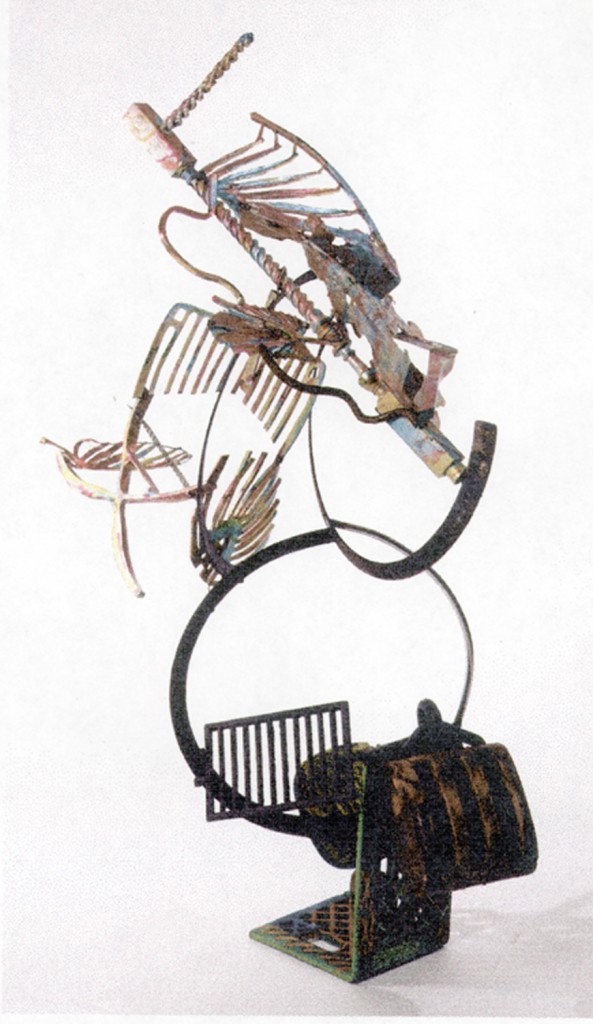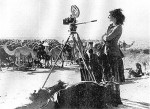
Nancy Graves
American, 1939-1995
Archial, 1987
anodized aluminum, stainless and mild steel, wood, iron and bronze with polychrome patina
70 x 40 x 25 in.
SBMA, Gift of Beverly and Chester Firestein
1995.52

Nancy Graves photographing a herd of camels in Morrocco.
COMMENTS
Nancy Graves: Stylistic Sources
Nancy Graves's personal aesthetic emerged in the later 1960s in the form of realistic life-size sculptures of camels. These works were rooted in her childhood memories of the animals preserved by taxidermists in the Natural History section of the Berkshire Museum in Pittsfield, Massachusetts and in the idioms of Abstract Expressionism taught at the Yale University School of Art where she was a student in the early 1960s. The interplay between the replication of nature and the formal values of abstract art was to inform her work throughout her life.
Transposing concepts from one medium to another, she continuously infused her work with new and innovative ideas. The examination of the interrelationships of line and form produced by the movements of a caravan of closely grouped camels in Graves's film Izy Boukir, made in Morocco in 1970, informed her sculpture of the period. Visual representations of natural phenomena like weather maps, and the moon maps made by NASA, inspired her paintings, drawings and prints of the early 70s. The outlines of her maps, reduced to linear abstractions in flat works of the later 70s, were translated into three dimensional drawings in space in Graves's sculpture of the 1980s. These abstract structures, painted with colorful patinas that reflected the brilliant tones of her paintings, watercolors and prints, were associated with the real world by the found objects and casts of natural and man-made forms.
Graves ultimately expanded the boundaries of her world to include quotations appropriated from the art of Egypt, classical antiquity, the Renaissance and Asian cultures. In order to simulate the layers of human history implied by her subject matter she broke the traditional formal boundaries between painting and sculptural space and added sculptural elements to her paintings.
- Linda Konheim Kramer, Executive Director, Nancy Graves Foundation
Nancy Graves grew up in Pittsfiend, Massachusetts, where her father was assistant director of the Berkshire Museum. Her early encounter with the museum's displays of art and natural history led her to create works influenced by paleontology, archaeology, and anthropology. She is best known for her bronze sculptures, but she also produced paintings, prints, films, and stage designs.
Graves' unusual bronze technique allowed her to capture the world surrounding her and reveal its details, much like the scientists that she observed working at the Berkshire Museum. Instead of using the lost wax method, everyday objects such as leaves of the monstrous plant and Chinese cooking scissors were cast directly into bronze. The objects retain their original identities, but they are then welded together and given a patina of bold colors.
